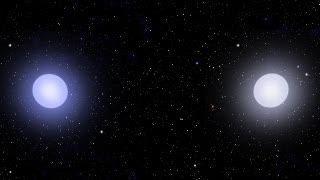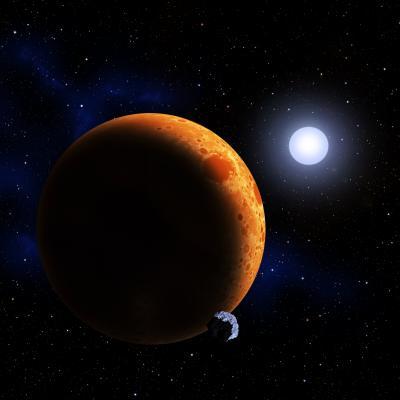The two white dwarfs orbit each other at a distance of 140,000 miles - less than the distance from the Earth to the Moon. They whirl around at speeds of 270 miles per second (1 million miles per hour), completing one orbit in only 39 minutes.
The fate of these stars is already sealed. Because they wheel around so close to each other, the white dwarfs stir the space-time continuum, creating expanding ripples known as gravitational waves. Those waves carry away orbital energy, causing the stars to spiral closer and closer together. In about 37 million years, they will collide and merge.
When some white dwarfs collide, they explode as a supernova. However, to explode the two combined have to weigh 40 percent more than our Sun. This white dwarf pair isn't heavy enough to go supernova. Instead, they will experience a second life. The merged remnant will begin fusing helium and shine like a normal star once more. We will witness starlight reborn.
This binary white dwarf was discovered as part of a survey program being conducted with the MMT Observatory on Mount Hopkins, Ariz. The survey has uncovered a dozen previously unknown white dwarf pairs. Half of those are merging and might explode as supernovae in the astronomically near future.

CfA astronomers have found a pair of white dwarf stars orbiting each other once every 39 minutes. In a few million years, they will merge and reignite as a helium-burning star.
(Photo Credit: CfA)

CfA astronomers have found a pair of white dwarf stars orbiting each other once every 39 minutes. In a few million years, they will merge and reignite as a helium-burning star. In this artist's conception, the reborn star is shown with a hypothetical world.
(Photo Credit: David A. Aguilar (CfA))